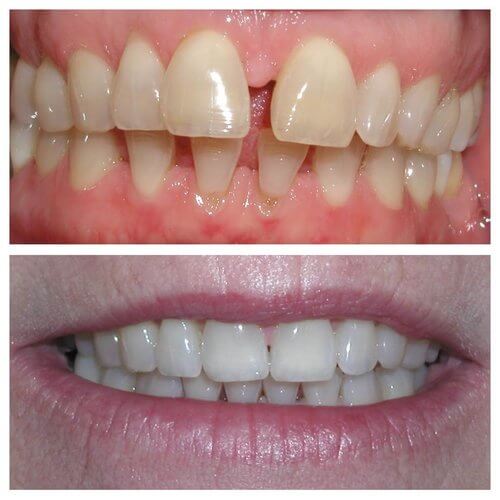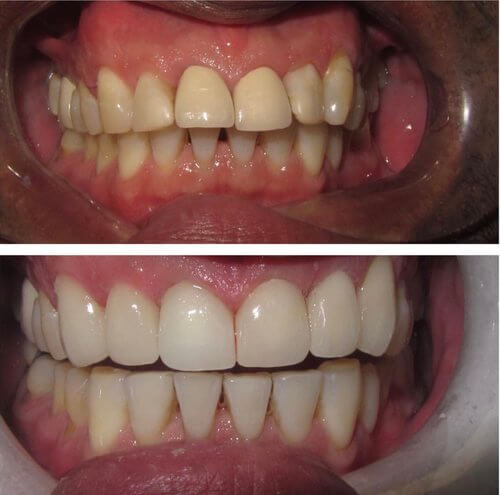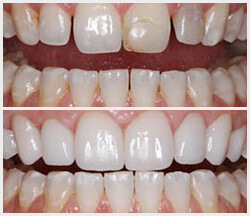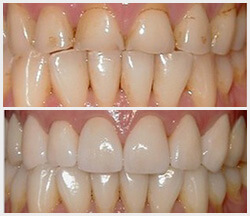What Is Myofascial Pain Disorder?
Myofascial pain disorder (MPD) is caused by the development of trigger points in the muscles of the jaw, face, and neck. Trigger points can cause pain, stiffness, and a limited range of motion in the jaw. It’s the most common type of TMJ and is typically treated with physical therapy, massage therapy, and trigger point injections.
Symptoms of Myofascial Pain Disorder
Symptoms of MPD can be mild or severe and may be intermittent or constant. Activities that involve the jaw, such as eating, talking, and yawning, can also exacerbate symptoms.
Common symptoms include:
- Pain or tenderness in the jaw, face, neck, or shoulders
- Limited range of motion in the jaw
- Headaches
- Earaches
- Difficulty chewing or speaking
- Clicking or popping sounds when opening or closing the mouth
Causes of Myofascial Pain Disorder
A variety of factors can cause myofascial pain disorder in TMJ, including:
- Bruxism: Bruxism is the habitual grinding or clenching of teeth, which can stress the TMJ and surrounding muscles. Teeth grinding can cause muscle tension and trigger points, which may lead to a myofascial pain disorder.
- Jaw Trauma or Injury: Injury to the jaw or face can cause damage to the TMJ and surrounding muscles, leading to a myofascial pain disorder. Jaw trauma can be due to a sports injury, a car accident, or a physical impact.
- Arthritis: Arthritis is a condition that causes inflammation and damage to the joints. When arthritis affects the TMJ, it can cause pain, stiffness, and limited range of motion in the jaw, which can eventually lead to a myofascial pain disorder.
- Poor Posture or Jaw Alignment: Poor posture or alignment of the jaw and neck can also contribute to the development of a myofascial pain disorder. This can include sitting at a desk for extended periods, holding the phone between the ear and shoulder, or sleeping in an awkward position.
These factors can also be interrelated, meaning that a person with poor posture may be more likely to grind their teeth, or someone with arthritis may also experience a jaw injury. By addressing these underlying causes, our Staten Island dentists can develop a more effective treatment plan for myofascial pain disorder in the TMJ.
Who Can Get a Myofascial Pain Disorder?
Anyone can develop myofascial pain disorder, regardless of age, gender, or occupation. However, certain factors may increase the risk of developing the condition:
- History of jaw trauma or injury
- Regularly engaging in activities that put stress on the jaw and facial muscles
- Certain medical conditions such as fibromyalgia, chronic fatigue syndrome, or other chronic pain conditions
- Poor posture or jaw alignment
- Bruxism (the habit of grinding or clenching the teeth)
Myofascial Pain Disorder Treatments
Treatment options for a myofascial pain disorder may vary depending on its severity and the underlying causes of the condition. Common treatments include:
- Physical Therapy: Stretching exercises and other physical therapy techniques can help improve the range of motion and ease pain in the jaw and surrounding muscles.
- Medications: Over-the-counter pain medications such as ibuprofen or acetaminophen may be recommended to alleviate pain and reduce inflammation. In some cases, your doctor may prescribe medications such as muscle relaxants or antidepressants.
- Trigger Point Injections: These injections typically involve the injection of a local anesthetic or corticosteroid directly into the affected muscle.
- Dental Devices: In some cases, a splint or mouth guard can help ease symptoms of bruxism (teeth grinding) and reduce stress on the jaw and facial muscles.
- Surgery: In severe cases of myofascial pain disorder, dentists may recommend surgery to alleviate pain and improve jaw function. However, surgery is typically recommended only after other treatment options have been exhausted.
Frequently Asked Questions
How is myofascial pain disorder in the TMJ diagnosed?
To diagnose MPD, a healthcare provider will typically perform a physical exam, assess the patient’s medical history and symptoms, and may order imaging tests such as X-rays, CT scans, or MRIs. In some cases, electromyography (EMG) or other specialized tests may also help diagnose the condition.
Can myofascial pain disorder in the TMJ be prevented?
While there’s no sure way to prevent myofascial pain disorder, several habits can help reduce the risk of developing the condition. Maintaining good posture, avoiding habits like teeth clenching or grinding, and using proper techniques when playing sports can help prevent the development of TMJ disorders. Additionally, regular exercise, a healthy diet, and maintaining a healthy weight can help reduce the risk of developing MPD.
Is myofascial pain disorder in the TMJ curable?
While there’s no cure for myofascial pain disorder, several treatments can help manage symptoms and improve quality of life. These may include lifestyle changes, physical therapy, and in some cases, surgical interventions. Working with a healthcare provider to develop a personalized treatment plan is the best way to manage the symptoms of MPD.
How long does it take to recover from myofascial pain disorder?
Recovery time varies depending on the severity of the condition and the chosen treatment. Some patients may see improvement in just a few weeks, while others may require several months of treatment and rehabilitation. Your doctor will provide a treatment timeline at your initial consultation.
Find Relief From Myofascial Pain Disorder Symptoms
If you’re experiencing symptoms of myofascial pain disorder in the TMJ, it’s crucial to speak with a healthcare professional to receive an accurate diagnosis and treatment. Don’t let pain and discomfort interfere with your daily life.
For those in Staten Island, schedule an appointment with our experienced dentists today. They’ll help you find a solution for your MPD symptoms.



Insurance
We accept many insurances. Please contact one of our Insurance Coordinators to discuss your dental coverage plan.
(718) 948 5111
appointments@sidental.com
Open 7 days a week
Reviews
The dentists are absolutely excellent…
“I have been going here for years. The dentists are absolutely excellent and they always have an appointment available that fits into a busy schedule. I also completed invisilgn and my teeth are perfectly straight now. They also practice preventive medicine and just went in for my 6 month cleaning. Every time feel like I have a new set of choppers and best yet the check up noted no cavities!.”
— J.R
Pleasant visit
“As usual, it was a pleasant visit thanks to Dr. Nasso and her great staff..”
— C.M.
Always treated with courtesy and respect.
“Always treated with courtesy and respect. All of my questions were answered regarding upcoming treatments..”
— J.C.
Smile Profile




Put your best face forward.
Create a positive change to your teeth and your smile.
